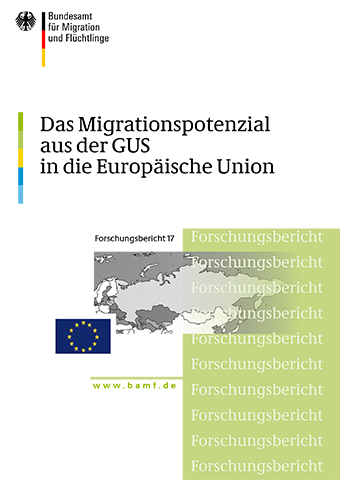The migration potential from the CIS to the European Union ,

Research Report 17 analyses the migration potential from the Commonwealth of Independent States (CIS) to the European Union. To this end, the differences in the demographic, economic, political and ecological development between the CIS and EU regions, as well as the influence of the migrant population in the EU States, and the current migration movements, are examined on the basis of data.
Migration movements within the CIS
The lion’s share of migrants from the CIS states (roughly 80 percent) remain in the region and move primarily towards Russia and Kazakhstan. A change in the socioeconomic, political and ecological situation might well lead to changes in the migration paths and destinations, but as long as there are accommodation capacities within the CIS, a large proportion of the labour migrants will remain there.
Migration potential from the CIS to the EU
The preferred destination countries are those EU States which have a cultural and historical affinity with the country of origin, and/or those with a liberal migration and immigration policy. Most of the approx. 1.5 million nationals of the CIS in the EU lived in Germany, Italy, the Czech Republic and Spain in 2010, with Ukraine, Russia and Moldova being the main countries of origin.
The increase in the number of nationals from the CIS in the EU springs from the attractiveness of the communities already based there (e.g. via family reunification), as well as from natural population growth. It hence seems likely that the previously-preferred EU destination countries will remain attractive. Immigration from the CIS will probably also particularly take place for the purpose of family reunification, when people take up work and for educational purposes. Labour migration by (highly-qualified) workers to Europe is also likely to increase slightly.
The study was drafted by: Dr. Susanne Schmid
The report is only available in German.

